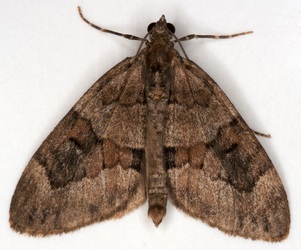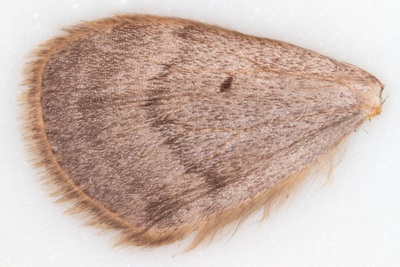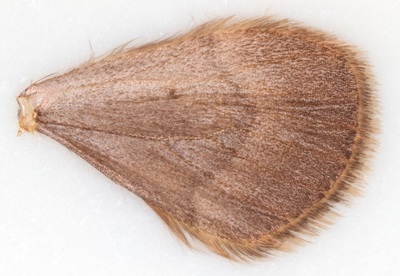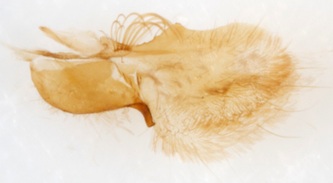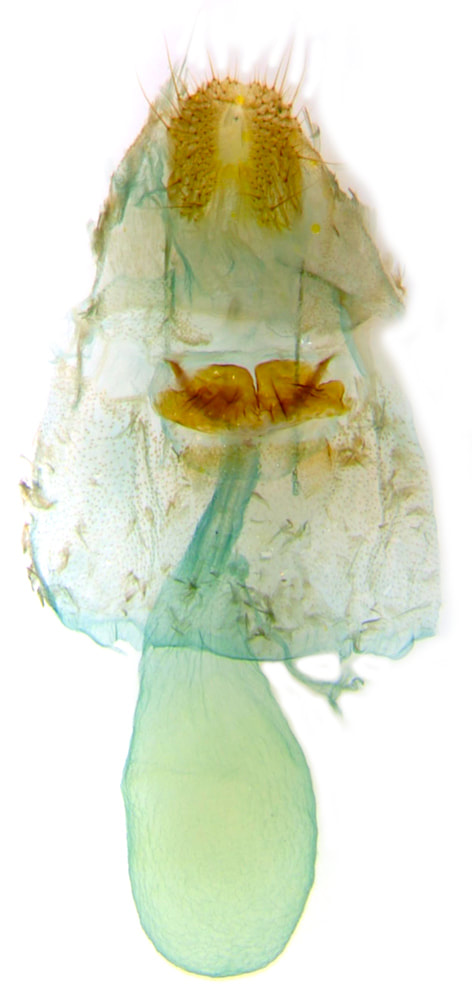70.081 Thera obeliscata (Grey Pine Carpet)
fw: 13-17mm; bivoltine May-Jul, Sep-Nov; various coniferous trees; common in coniferous woodland, parks and gardens throughout GB

ID: Very similar to, and some individuals may be indistinguishable from, T.britannica (Spruce carpet). According to the 'difficult species guide' the only absolute distinguishing feature is in the male antenna. Viewed ventrolaterally T.obeliscata has simple antennae, each segment being more or less rectangular with a rounded 'shoulder' at its distal end. T.brittanica has slightly serrate antennae, each segment being broader with an angular protruding 'shoulder' at its distal end. (The illustrations in the difficult species guide and at dissection group also show the scales on the dorsal surface of the antennae to be semi-erect in T.britannica and more or less appressed in T.obeliscata - and if this is a valid distinction it may apply to both sexes. The cilia on the ventral surface also appear significantly longer in male T.britannica).
Typically T.brittanica has a grey-brown ground colour, with well-marked white admixture in bands either side of the median fascia and the white subterminal line is also well-marked. T.obeliscata shows individual variation in forewing colour from pale sandy-brown through red-brown to dark grey brown, and typically lacks the white admixture and has an indistinct or absent subterminal line. The margins of the median fascia tend to be more notched in T.brittanica and smoother in T.obeliscata. None of these distinctions is absolute, but a specimen displaying the full set of typical features for one or other species should be that species. Many specimens, however, do not display a full set of typical features.
There are no consistant genital features for separating T.obeliscata from T.britannica in either sex.
(T.variata which occurs in mainland Europe also has the common name Spruce Carpet. T.(v.)britannica has been considered to be a ssp of T.variata, but T.variata has antennal features more like T.obeliscata. It also has indistinguishable genitalia. It has not been reported in Britain).
Typically T.brittanica has a grey-brown ground colour, with well-marked white admixture in bands either side of the median fascia and the white subterminal line is also well-marked. T.obeliscata shows individual variation in forewing colour from pale sandy-brown through red-brown to dark grey brown, and typically lacks the white admixture and has an indistinct or absent subterminal line. The margins of the median fascia tend to be more notched in T.brittanica and smoother in T.obeliscata. None of these distinctions is absolute, but a specimen displaying the full set of typical features for one or other species should be that species. Many specimens, however, do not display a full set of typical features.
There are no consistant genital features for separating T.obeliscata from T.britannica in either sex.
(T.variata which occurs in mainland Europe also has the common name Spruce Carpet. T.(v.)britannica has been considered to be a ssp of T.variata, but T.variata has antennal features more like T.obeliscata. It also has indistinguishable genitalia. It has not been reported in Britain).
|
§1 Bryher, Isles of Scilly; 16/10/2009; male
§2 Bryher, Isles of Scilly; 12/10/2011; male; fw 14.0mm §3 Sibton Park, Kent; 29/09/2010; male; fw 15.9mm §4 Ardnamurchan, Argyll; 09/07/2012; male §5 St Marys, Isles of Scilly; 15/10/2007; male §6 New Forest, Hampshire; 02/06/2012; male §7 St Marys, Isles of Scilly; 04/10/2013; female; fw 15.8mm §8 Dornie, Ross-shire; 08/09/2014; fw 12.4mm; male §9 Dornie, Ross-shire; 08/09/2014; fw 12.9mm; male §10 Dornie, Ross-shire; 07/09/2014; fw 11.9mm; male All images © Chris Lewis |
§11 Foulden Common, Norfolk; 06/06/2016; male
§12 St Marys, Isles of Scilly; 14/10/2018; female; fw 13.7mm; to light §13 Cliburn Moss, Cumbria; 24/06/2019; male §14 Cliburn Moss, Cumbria; 12/05/2022 |
Here are examples of females that are probably T.obeliscata but which do not display a full suite of T.obeliscata features
Page published 24/04/2013 (§1-6) | §7 added 02/11/2013 | ?1 added 11/02/2014 | §8-10 and ?2 added 12/12/2014 | §12 added 19/11/2018 |
§13 added 18/02/2020 | §14 added 07/12/2022
§13 added 18/02/2020 | §14 added 07/12/2022



